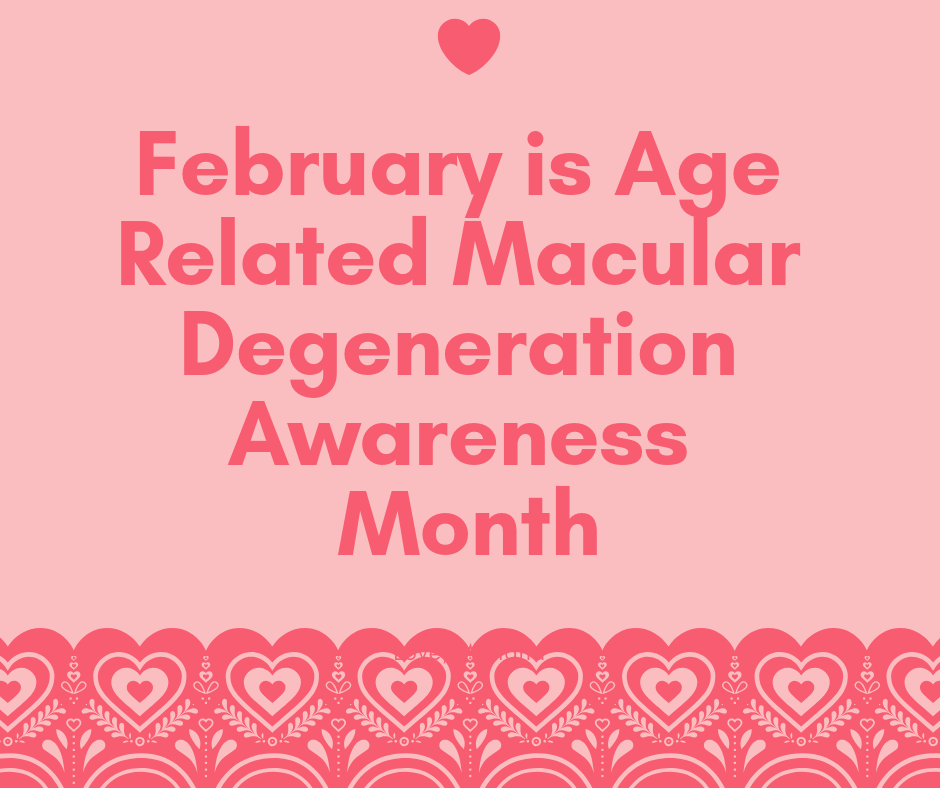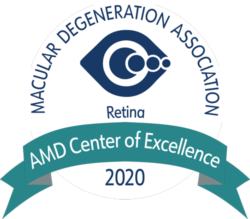
 Age Related Macular Degeneration (AMD) is the leading cause of vision loss in those over the age of 50. Age Related Macular Degeneration causes a loss of central vision. This vision loss occurs as the macula becomes damaged. The macula is located in the back of the eye, and it is responsible for transmitting signals to and from the brain. The macula is made of over a million light-sensitive nerve fibers.
Age Related Macular Degeneration (AMD) is the leading cause of vision loss in those over the age of 50. Age Related Macular Degeneration causes a loss of central vision. This vision loss occurs as the macula becomes damaged. The macula is located in the back of the eye, and it is responsible for transmitting signals to and from the brain. The macula is made of over a million light-sensitive nerve fibers.
Did you know that our brain is actually involved in a significant amount of our vision? It helps us interpret the images that our eyes see.
Since AMD is a common cause of vision loss, we’ve put together the most common questions about the disease and answered them. Here are the most common questions about AMD, answered.
What is Age Related Macular Degeneration?
Age Related Macular Degeneration is an eye disease that causes loss of central vision, which lets us see objects directly in front of us. Sharp, central vision is important for daily activities, such as reading, driving, looking at emails, or texting your spouse.
What are the Stages of Age Related Macular Degeneration?
There are three stages of Age Related Macular Degeneration. They are Early AMD, Intermediate AMD, and Late AMD. Early Age Related Macular Degeneration is detected through abnormal yellow deposits, called drusen, just below the retina. Those who are in the Early AMD stage do not normally experience vision loss. Intermediate Age Related Macular Degeneration is detected through the presence of Drusen, and/or pigment changes in the retina. Both of which are detected through comprehensive eye exams. Late Age Related Macular Degeneration is detected through the presence of Drusen, in addition to vision loss. There are two types of Late AMD. The first type is what is known as Dry Age Related Macular Degeneration. In Dry AMD, light-sensitive cells become damaged, causing vision loss. The other type of Late AMD is called Wet Age Related Macular Degeneration. In Wet AMD, the abnormal growth of new blood vessels occurs. These new vessels may leak or become damaged, causing the macula to swell or become damaged. It is possible to have both Wet and Dry Age Related Macular Degeneration in the Late Stage.
What are the Symptoms of Age Related Macular Degeneration?
In its early stage, AMD often does not entail any symptoms of the disease. In its late stage, AMD may cause distorted or blurry vision. Not all who develop early Age Related Macular Degeneration will develop late Age Related Macular Degeneration. If Age Related Macular Degeneration affects only one eye, you may not notice changes in vision in the late stage. This is why regular eye exams are so important, especially if you have a higher risk of developing Age Related Macular Degeneration.
Who is at Risk for Developing Age Related Macular Degeneration?
Those who smoke increase their risk of developing AMD by 200%. This disease is also more common among Caucasians than any other race. If Age Related Macular Degeneration runs in your family, you’re at a higher risk of developing the disease. Genetics can also play a role in who is more susceptible to the disease. Nutrition and lifestyle choices may also put you at a higher risk.
How is Age Related Macular Degeneration Treated?
There are no treatment options for Early Age Related Macular Degeneration since vision is not compromised and symptoms are not present during this stage. In Intermediate and Late Age Related Macular Degeneration, supplements, medications, or surgery could be successful in treating this disease. Although, vision loss is irreversible. If vision loss does occur, prescription lenses or glasses could help improve the quality of vision. Low vision devices may also be beneficial to those who suffer from distorted vision. Low vision devices include hand held magnifying glasses, reading glasses with high-magnifying lenses, video magnifiers, computers with large-print and speech-output systems, large print reading materials, talking watches, clocks and calculators, and other technologies used for those with low vision, such as closed-circuit television.
If you have any questions, or would like to make an appointment, please call us. The number to our Kansas City location is 816-455-2020. Our St. Joseph office location can be reached by calling 816-279-7015.
Attributions: https://nei.nih.gov/health/maculardegen/armd_facts

Comments are closed here.